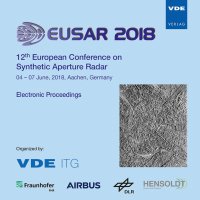Observation of surface deformation associated with hydraulic fracturing in western Canada using InSAR
Conference: EUSAR 2018 - 12th European Conference on Synthetic Aperture Radar
06/04/2018 - 06/07/2018 at Aachen, Germany
Proceedings: EUSAR 2018
Pages: 6Language: englishTyp: PDF
Personal VDE Members are entitled to a 10% discount on this title
Authors:
Kubanek, Julia; Liu, Yajing (Dept. of Earth and Planetary Sciences, McGill University, Canada)
Harrington, Rebecca M. (Institute of Geology, Mineralogy and Geophysics, Ruhr-University Bochum, Germany)
Samsonov, Sergey (Canada Centre for Mapping and Earth Observation, Natural Resources Canada, Ottawa, Canada)
Abstract:
In North America, the number of induced earthquakes related to fluid injection due to the unconventional recovery of oil and gas resources has increased significantly within the last five years. In the Western Canadian Sedimentary Basin (WCSB), the increased seismicity is more highly correlated with the hydraulic fracturing procedure than with the disposal of wastewater. Some of these events reached magnitudes greater than 4, and have led to temporary shutdown of well production. To date, studies conducted in the WCSB on induced earthquakes only focused on seismicity monitoring and numerical modeling. In the present study, we consider surface deformation to study short- and longterm effects on the environment around hydraulic fracturing wells. We utilize spaceborne radar satellite data from the ERS-1 & 2, Envisat, RADARSAT-2, and Sentinel-1 satellite missions aiming to identify short- and long-term surface deformation during fluid injection and related earthquakes, which can be used to improve hazard assessment and risk mitigation in a target site in the WCSB.


